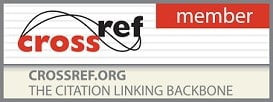- Printed Journal
- Indexed Journal
- Refereed Journal
- Peer Reviewed Journal

Journal of Pharmacognosy and Phytochemistry
Vol. 14, Issue 1 (2025)
Study on the evaluation of anti-diabetic efficacy of polyherbal formulation in Sprague-Dawley rats
Chinni Krishna Khandavalli, Santosh Kumar M, Riyaz Khan P, Asif Shaik, Vijay Patibandla, Sreenivas S and Thapeta Joshi Anand
Currently, there is significant expansion in the use of herbal mixtures, which are becoming increasingly popular in both developing and developed nations due to their natural origin and fewer side effects. Diabetes mellitus (DM), a prevalent metabolic disorder globally, is characterized by hyperglycaemia resulting from impaired insulin secretion, insulin resistance, and disruptions in carbohydrate, protein, and lipid metabolism. The World Health Organization (WHO) identifies three primary forms of diabetes: type 1, type 2, and gestational diabetes, which occurs during pregnancy. The aim of the present study was to determine the anti-diabetic activity of a polyherbal formulation in Alloxan induced type 2 diabetic rats. In this study, a polyherbal formulation consisting of Gymnema sylvestre, Tinospora cordifolia, Cinnamomum verum, Syzygium cumini, Aegle marmelos, Withania somnifera, Phyllanthus emblica, and Pterocarpus marsupium was evaluated for its anti-diabetic potential. The Soxhlet extraction method was employed to obtain the herbal extracts. Five groups of animals were used in the study: Group I (control), Group II (negative control, treated with Alloxan), Group III (standard, treated with Glibenclamide), Group IV (treated with polyherbal extract 1, PHE-1), and Group V (treated with polyherbal extract 2, PHE-2). The anti-diabetic activity was assessed over a period of 7 days. The polyherbal extracts significantly reduced fasting blood glucose levels in diabetic rats and enhanced glucose tolerance, indicating their potential as effective anti-diabetic agents.
Pages: 63-67 | 3890 Views 360 Downloads









